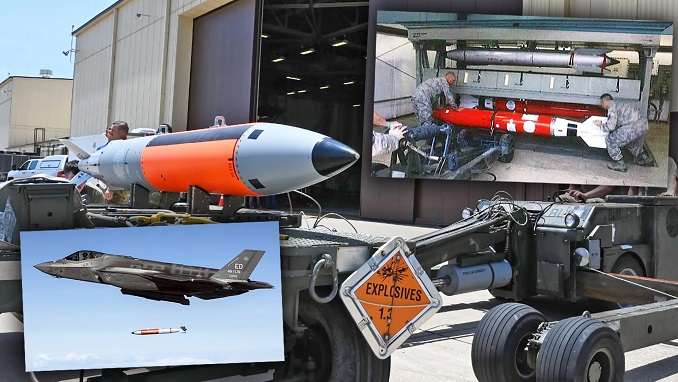
The United States has sped up the fielding of a more accurate version of its mainstay nuclear bomb to NATO bases in Europe.
The move involves replacing older weapons with the newer version at various storage facilities in Europe for potential use by U.S. and allied bombers and fighter jets. It comes amid heightened tensions over Russia’s threats to use a nuclear weapon in Ukraine and growing concerns that the West needs to do more to deter Moscow from crossing that line.
The upgraded B61-12 air-dropped gravity bomb was originally scheduled for spring 2023. But that timing has been moved up and is now planned for this December. U.S. officials told NATO allies of the acceleration during a closed-door meeting in Brussels this month.
The upgrades to the program have been openly discussed for years both in budget documents and public statements. Officials from the Pentagon said the upgrades are needed in order to make sure weapon stockpiles are both modern and safe.
But the arrival date was a surprise to longtime observers. Some fear the acceleration could further stoke an already dangerous situation in Europe.
The announcement came days before NATO kicked off its annual nuclear exercise, which is known as Steadfast Noon. This week Russia held a nuclear exercise that its defense chief described as simulating a “massive nuclear strike” in retaliation for a nuclear attack on Russia.
Experts say that it would be odd for the U.S. to now rush the program, as the U.S. says it does not respond to the situation with nuclear weapons. But that the message behind sending the first bombs in December may be more for European allies than it is for Moscow, as some European countries feel especially vulnerable.
There are already older B61s in NATO nations, which the Russians are well aware of, experts said. The new ones will be newer but are not that different.
But it may be a way for the U.S. to assure allies when they are particularly feeling threatened.

Be the first to comment